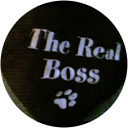Get the most out of your shuffleboard game by choosing the right speed of powdered wax for your board.
What brand and speed of shuffleboard sand you use can have a significant impact on the enjoyment level that you receive from your Shuffleboard Table. When it comes to powdered wax, choosing the right speed is key. But with so many different speeds of powdered wax to choose from, how do you know which one is right for you?
Player Skill Level – Take into account the skill level of the players who will be using the table. For novice players, a slower speed wax might be a better choice. Advanced or professional players generally prefer a faster speed waxes.
Table Type – The age, condition, and type of finish on your shuffleboard table can all play a role in how fast or slow your table plays. For example, a newer table with a slicker surface will play faster than an older, worn table, if the same speed powder was used on both.
Climate Conditions – Climate can affect the performance of your shuffleboard wax. For example, high humidity can increase tracking as well as make the wax tacky and slower, whereas the same wax would be noticeably faster in very dry climates.
Wax Type – Different manufacturers offer different speed ranges for their powdered waxes. Make sure to read the label carefully to ensure that you are selecting the appropriate speed range for your needs.
Kind of Weights/Pucks – One additional consideration, and this is extremely important. The type of Shuffleboard Weights (pucks), will have an enormous impact on how fast your table plays. Shuffleboard Pucks come in three different shapes on the bottom side. They are, in the order of fastest to slowest, flat, rounded, and pointed.
Our best-selling Ultra Glide T4, might be uncontrollably fast with flat bottom weights. With weights that are rounded on the bottom (which all of the highest quality weights have), T4 would be very playable, albeit it should still only be used on longer shuffleboards.
When selecting the right speed of powdered wax, start with a slower wax and gradually move up the speed range until you find the right one for your table and playing style. It’s always better to start with a slower option in the beginning. Nothing is more frustrating than a table that is so fast that it is prohibitively difficult to keep the pucks on the board and make it tough to score consistently.
The Shuffleboard Federation offers eleven different Shuffleboard Speed Powder products. They come in two broad categories, Regular Grade (R1, R2, R3, and R4), and Tournament Grade (T0 (coming soon), T1 (coming soon), T2, T3, T4, and T5). We also sell our White Lightning Speed Regulator, which can help you fine tune the speed of your wax.
One of the questions we are most often asked is whether our Shuffleboard Waxes contain ground walnut shells. Walnut shells have been used as a principal component of The Shuffleboard Federation’s Ultra Glide™ Powdered Shuffleboard Table Wax products for over 25 years. Through a proprietary mix of finely ground walnut shells and White Lightning® Speed Regulator, The Shuffleboard Federation has developed the most consistent table shuffleboard powders available. Because of the use of walnut-based materials, The Shuffleboard Federation often receives questions related to walnut allergies and allergic reactions.
Walnuts (Juglandaceae) are a member of the Tree Nut family, and as such, have been reported to cause allergic reactions in sensitive individuals. Tree Nut allergy is common, and reactions range from mild itching of the mouth to anaphylaxis. The reported incidence of Tree Nut allergies varies based on region, age, race/ethnicity, and the definition used for diagnosis but typically affects ~0.05%–2.0% of the population, with children being the most highly affected group. Specifically, walnuts have been estimated to contribute 20-30% [MM([3] of the total Tree Nut allergy incidence in the United States.
Nearly all reported allergic reactions to walnuts are the result of ingestion of the dried fruit (or kernel). Through component-resolved diagnostics, at least 5 different proteins (Jug r 1-5) have been identified in the walnut kernel that can cause allergic reactions in people. These proteins have not been shown to occur in the walnut shell. Ingestion is not anticipated to occur under normal use conditions for Table Shuffleboard Wax.
Walnut shell has not been shown to cause skin sensitization through exposure. That said, walnut shell Material Safety Data Sheets (MSDS) and warning labels for products containing walnut shells often recognize risks of allergic reaction. This is typically due to the potential for trace amounts of walnut kernel to remain in the shell during processing and thus enter the finished product. Walnut shells are regularly used in the cosmetic industry as an abrasive exfoliant where extensive skin exposure occurs without incident. Similarly, skin contact is not considered a hazard for shuffleboard wax containing walnut shells. Walnut shells have not been shown to present an acute toxicity hazard.
There are several case reports of contact dermatitis and skin hyperpigmentation related to dermal exposure to the green outer flesh (hull or husk) of walnuts during harvest or preliminary processing. The active aromatic napthoquinone (Juglone) has been shown to cause the irritation. Juglone has been isolated from the hull but has not been identified in the shell of the walnut, and skin irritation or dermatitis has not been reported for the dried shell.
Disclaimer: The following review of available data for walnut allergies is for informational purposes and provides an overview for the general population. It is NOT intended to be a substitute for professional medical advice, diagnosis, or treatment. Always seek the advice of your physician or other qualified health care provider for any individual concerns, conditions, or treatments.
From fast to slow, we have the perfect speed for every skill level, table, and pucks. Our suggestion is to use the chart below to pick one can each of three different speeds and experiment until you determine which product is best suited for your needs.




















































